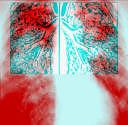
What is Silicosis?
Symptoms, Diagnosis, Treatment. FAQs
![]() Silica
Silica![]()
Silica is the second most common mineral on earth. It is found in concrete, masonry, sandstone, rock, paint, and other abrasives. The cutting, breaking, crushing, drilling, grinding, or abrasive blasting of these materials may produce fine silica dust. It can also be in soil, mortar, plaster, and shingles. Silicosis is due to deposition of fine dust (less than 1 micrometre in diameter) containing crystalline alpha-quartz silica or silicon dioxide.
The induction period between initial silica exposure and development of radiographically detectable nodular silicosis is usually 10 years. Shorter induction periods are associated with heavy exposures, and acute silicosis may develop within 6 months to 2 years following massive silica exposure.
When Silica particles are inhaled, it results in the formation of scar tissue in the lungs preventing oxygen from getting in the blood. This condition eventually results in a disease called Silicosis, an incurable and progressive lung disease. Approximately 300 people die from the disease every year in the United States.
More than one million workers are occupationally exposed to crystalline silica dusts in the United States. According to the World Health Organization, more than 100,000 of these workers are sandblasters. What is alarming is that 59,000 of them will eventually develop silicosis.
![]() Pathology
Pathology![]()
When the small silica dust particles are breathed into the lungs, they can embed themselves deeply into the tiny alveolar sacs and ducts where oxygen and carbon dioxide gases are exchanged. There, the lungs cannot clear out the dust by mucous or coughing.
When fine particles of silica dust are deposited in the lungs, macrophages that ingest the dust particles will set off an inflammation response by releasing tumor necrosis factor, interleukin-1, leukotriene B4 and other cytokines. In turn, these stimulate fibroblasts to proliferate and produce collagen around the silica particle, thus resulting in fibrosis and the formation of the nodular lesions.
Furthermore, the surface of silicon dust can generate silicon-based radicals that lead to the production of hydroxyl and oxygen radicals, as well as hydrogen peroxide, which can inflict damage to the surrounding cells.
Characteristic lung tissue pathology in nodular silicosis consists of fibrotic nodules with concentric "onion-skinned" arrangement of collagen fibers, central hyalinization, and a cellular peripheral zone, with lightly birefringent particles seen under polarized light. In acute silicosis, microscopic pathology shows a periodic acid-Schiff positive alveolar exudate (alveolar lipoproteinosis) and a cellular infiltrate of the alveolar walls.
![]() Prevalence
Prevalence![]()
Although silicosis has been known for centuries, the industrialization of mining has lead to an increase in silicosis cases. In the United States, a 1930 epidemic of silicosis due to the construction of the Hawk's Nest Tunnel near Gauley Bridge, West Virginia caused the death of more than 400 workers.
Also, the mining establishment of Delamar Ghost Town, Nevada was ruined by a dry-mining process that produced a silicosis-causing dust. After hundreds of deaths from silicosis, the town was nicknamed The Widowmaker.
Indeed, silicosis is an occupational hazard to mining, sandblasting, quarry and foundry workers, as well as grinders, stonecutters and those continually exposed to silica dust.
Due to protective measures, such as using respirators, death rates of silicosis in Western countries have been steadily declining.
![]() Risk for exposure
Risk for exposure![]()
The workers that are most at risk for exposure to Silica are:
Individuals who chip, saw, hammer, drill, grind, crush, load, transport or work with concrete or rock substances
Workers who sandblast buildings
Employees of the shipbuilding industry
Miners
Railroad workers
Glass manufacturing employees
Welders
Additionally, if you have worked with any of the following materials, you may be at increased risk of developing Silicosis:
Blasting abrasives
Foundry Operations
Brick
Concrete
Cement mortar
Granite
Sandstone
Slate
Mineral deposits
Rock and stone
Sand
Topsoil
Silicosis is an irreversible condition, with no cure. Treatment options.....
silicosis_symptom.html
 Silicosis Diagnosis and Treatment
Silicosis Diagnosis and Treatment Patient history should reveal exposure to silica dust due......
silicosis_treatment.html
Silicosis FAQ
Exposure risks are greatest for those who work in construction, mining, sandblasting, stonecutting.....
silicosis_faq.html
Site map